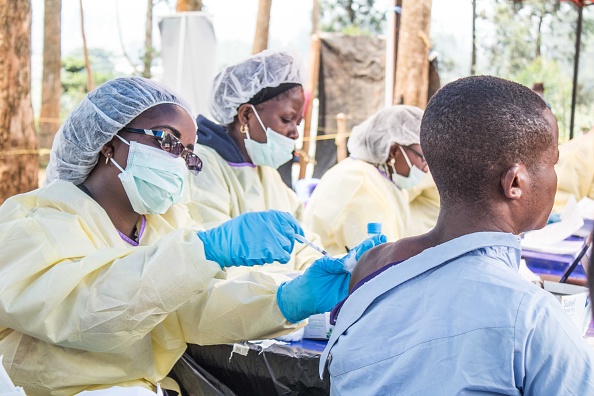
Scientists try to understand role sexual activity plays in Ebola’s spread

Report from The Conversation
There is no indication the current Ebola outbreak in the Democratic Republic of Congo is near an end or at least, containment.
While many issues affecting the containment of the outbreak have been mentioned repeatedly (porous borders, misinformation of Ebola and mistrust of health workers) one possible factor is only beginning to gain interest when discussing Ebola.
Multiple reports strongly suggest that re-emergence of Ebola disease is linked to persistent infections and sexual transmission from survivors. What this means is that people who have survived infection by Ebola virus – and who no longer show any symptoms of the disease – can continue to carry the virus and pass on the infection months after they have recovered.
One research group recently reviewed the current understanding of rates and mechanisms of Ebola virus persistence in male disease survivors.
Nearly everything known about Ebola virus persistence in the reproductive system has resulted from testing semen of survivors.
It has previously been established that the Ebola virus can be detected in semen long after it is cleared from other organs and tissues. For example, a recent study showed that the virus could be detected in 50% of male survivors 115 days after recovery and may linger for up to three years.
The virus has also been detected in semen at concentrations greatly exceeding that found in the blood at peak infection. The data suggests that this occurs in the absence of any symptoms of disease. In addition, sexual transmission of Ebola virus from male survivors has been reported up to 18 months following their recovery.
These observations are important to public health. Firstly, long-term persistence of Ebola virus could lead to the initiation of new chains of disease transmission long after outbreaks have ended. Secondly, the presence of high concentrations of virus in the semen in the absence of disease symptoms means that male survivors could carry and transmit the virus without knowing they’re still infected.
But the fact that only semen is being used in these studies presents a problem. This means that the perseverance of the virus is only being traced in males. This means that little is known about the persistence of the virus in women. This urgently needs attention because Ebola virus has been detected in female survivors up to 15 months following recovery, and there are recorded cases of female to male transmission.
In a bid to answer some of these questions scientists used laboratory models of male and female reproductive systems. This allowed them to study the dynamics of Ebola virus transmission to the reproductive system as well as identify the particular types of cells that are infected by Ebola virus in the reproductive system.
By infecting mice with Ebola virus, it can be determined whether the male reproductive system is damaged by persistent infection. We can also determine if there is an effect on fertility, and how often persistent infections result in sexual transmission. In addition, infections of female mice help us determine the severity of disease caused by sexually transmitted Ebola virus, the effects on female fertility, and consequences for gestational development.
The recent success of vaccination and therapeutic treatments in the current DRC Ebola disease outbreak provides hope. But a great deal about the virus remains unknown. A greater understanding of the mechanisms of how persistent infections occur will help us guide future outbreak response efforts, with the goal of reducing additional Ebola virus transmission events and providing increased care, support and safety for survivors and their communities.






